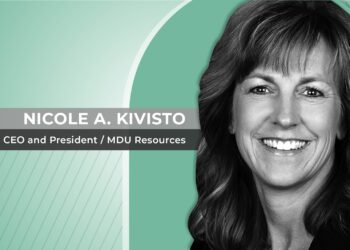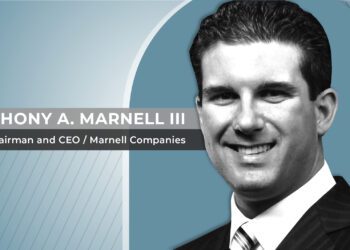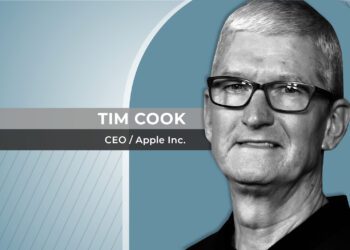CEO Grant Fagerheim believes a strategy founded on environmental leadership can help propel Whitecap Resources forward.
When Grant Fagerheim founded Whitecap Resources in 2009, he did so believing there was space in the market for a junior oil and gas company specifically focused on light oil to be able to flourish and grow. Despite the challenges afflicting the industry in the past decade so it proved to be. The figures alone tell the story. Whitecap started out producing 850 barrels of oil per day; by 2012, they had moved up to 14,000 barrels, and today, are responsible for producing 74,000 barrels of oil per day.
“We thought that if we focused on quality employees and a singular focus to grow effectively through financial discipline and an ability to adapt, we would be able to commit to value creation on a per share basis,” Fagerheim told CEO Magazine in an exclusive interview. “We transitioned our strategy from a pure growth company during 2009-12 to a growth plus a shareholder dividend strategy. The key attributes we focused on were low decline, high cash flow net back on production assets, and strong capital efficiencies.”
Whitecap Resources is a Canadian public oil company based in Calgary, Alberta, with operations in Alberta, Saskatchewan, and British Columbia. In 2012, Whitecap acquired Midway Energy, another Alberta light oil producer. In 2016, the company bought some of Husky Energy’s oil assets in Southeast Saskatchewan and in 2017 they purchased a 62% interest in the Weyburn oil project in Saskatchewan from Cenovus Energy. In 2019, Whitecap Resources boasted revenue of CA$1,092,317 million.
“We’re very unique,” Fagerheim said on what sets Whitecap apart from other up and coming oil companies. “Not only do we have low decline assets between 19-20%, which is very unusual for a producing company, but we own and operate the largest CO2 sequestration project in the world. Our objective is to continue to grow production, reserves, and net asset value, as well as pay a dividend within annual cash flows at a pace of between 3-8% per year. We also want to continue our focus on environmental leadership with regards to air, water, and land initiatives.”


Per share growth
Fagerheim was quick to point out that while Whitecap Resources is a relatively small company–equivalent to an intermediate sized energy company in Canada and a smaller intermediate in the US its commitment to per share dividend growth and a focus on generating free cash flow give it an extremely solid foundation moving forward. Furthermore, Whitecap is keen to take a stewardship role on environmental matters within the industry.
“When we talk about leading on air, water, and land initiatives, we’re talking about air through CO2 sequestration; methane reduction through as reusable water in the field; and land through minimizing our land use footprint as well as ensuring land use availability, meaning once we’re completed we minimize our footprint as small as we can for future usage,” Fagerheim explained. “Our people are extremely focused on growth, but that means responsible growth within the communities in which we work.”
Long-term partners
In terms of supply chain competence, Fagerheim emphasized the importance of quality and price as far as choosing its key service providers, but also stressed the desire of Whitecap Resources to foster long-term commitments from its partners, as well as constantly stay ahead of the curve on new technological developments in the field.
“We bid out, but we definitely want longer term commitments,” he elaborated. “And we make those available by giving our people longer lead time preparation and planning. We’re not afraid of using new technologies that we see advancing through our different service providers. In fact, we encourage the taking of measured risks. We’re able to do that because we’re at the size and scale that we can make those longer term commitments. We can commit for up to a year using different services, and evolve and change those as we move forward.
“It also goes back to the principle of community involvement,” Fagerheim added. “We like to use service providers that are in and around the communities where we work and which boast strong environmental and safety practices and standards. We’re looking to stay in tune to what technologies are available to us, but really apply those in the communities and areas in which we work.”
Advancing technology
Fagerheim highlighted the desire of Whitecap to embrace quickly advancing IT technologies, including data management and analytics, notably field analytics and data capture, with the objective of improving operational efficiency and driving stronger financial performance. In this area, too, Fagerheim believes that strategic alliances are key.
“We get access to some of the best equipment and best people, but only insofar as we make a commitment in return that we’re going to use those services on a continual basis,” he insisted. “We definitely see it show up in our operational, as well as our financial, performance. That includes better time frames from initiation of drilling to onstream times and an awareness of our people being able to work together on a collaborative basis with the people they have relationships with in the field. It doesn’t matter if it’s on the drilling side, the completion side, the tying in of production, or the long term monitoring of our production and our environmental practices.” In each one of the areas in which Whitecap Resources operates, the company has five business units, each one overseen by a manager of operations and a VP of operations and production, who are responsible for procuring services in the field.
“The reason we do it that way is because we think we can drive the best efficiencies when we give it to each one of the specific area teams, Fagerheim emphasized. That way we have a better exchange of data that moves across each one of our five business units. We set the parameters together as to what their efficiencies will look like. They’re the ones who define what the deliverables are on the other side.”
“What we try to emphasize is that from a sustainability perspective and our disciplined approach to commodities, we believe that long term we can generate 10-15% returns through a combination of growth plus our dividend. And we’ve been able to demonstrate that since 2013, even though the oil price environment has been extremely volatile.”














